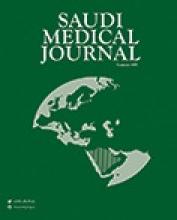Abstract
OBJECTIVE: This study is aimed at establishing the prevalence of Chlamydia trachomatis infections among school pupils in Sana'a, Republic of Yemen, and to explore the association of infection with environmental and social factors.
METHODS: A total of 787 school children, 529 boys and 258 girls, were randomly selected for enrollment in this study. Four hundred and twenty-nine were from 4 schools in Sana'a city, and 358 from 3 rural schools around Sana'a, Republic of Yemen. Questionnaire forms were filled in for each child to investigate environmental and social factors. Sera were tested for anti Chlamydia trachomatis IgG antibodies using enzyme-linked immunosorbent assay CTM-IgG®.
RESULTS: An overall rate of infection of 45.9% was determined. The rate of infection among rural pupils (73.2%) was higher (P<0.0001) than that among urbanones (23.1%). The rate of infection was found significantly (P<0.001) inversely correlated with age of the pupils. Environmental factors which were found to influence the infection rate were; rural residence, unplastered walls, mud floor, lack of stand pipe water, lack of latrine and presence of animals within dwelling with odds ratio of 9.1, 6.3, 6.1, 5.2, 3.7, 3.5 and 1.7. Also, the male sex and illiteracy of the parents has been found to be risk factors for infection.
CONCLUSION: Prevalence of Chlamydia trachomatis infection was found to be high. The prevalence correlates inversely with age. Rural residence, environmental conditions and social factors were risk factors for infections. Yemen could be identified as a trachoma endemic area, which should be targeted by the control programs.
- Copyright: © Saudi Medical Journal
This is an open-access article distributed under the terms of the Creative Commons Attribution-Noncommercial-Share Alike 3.0 Unported, which permits unrestricted use, distribution, and reproduction in any medium, provided the original work is properly cited.






